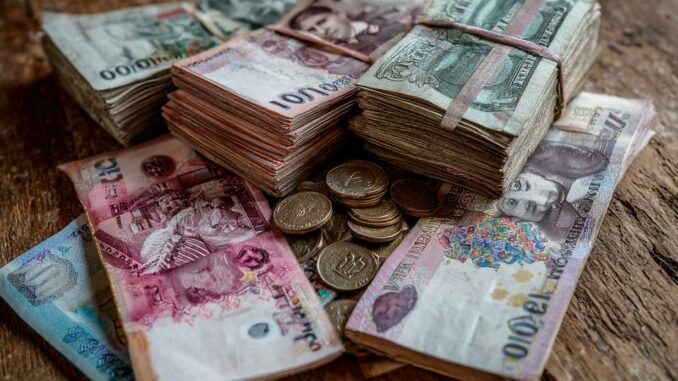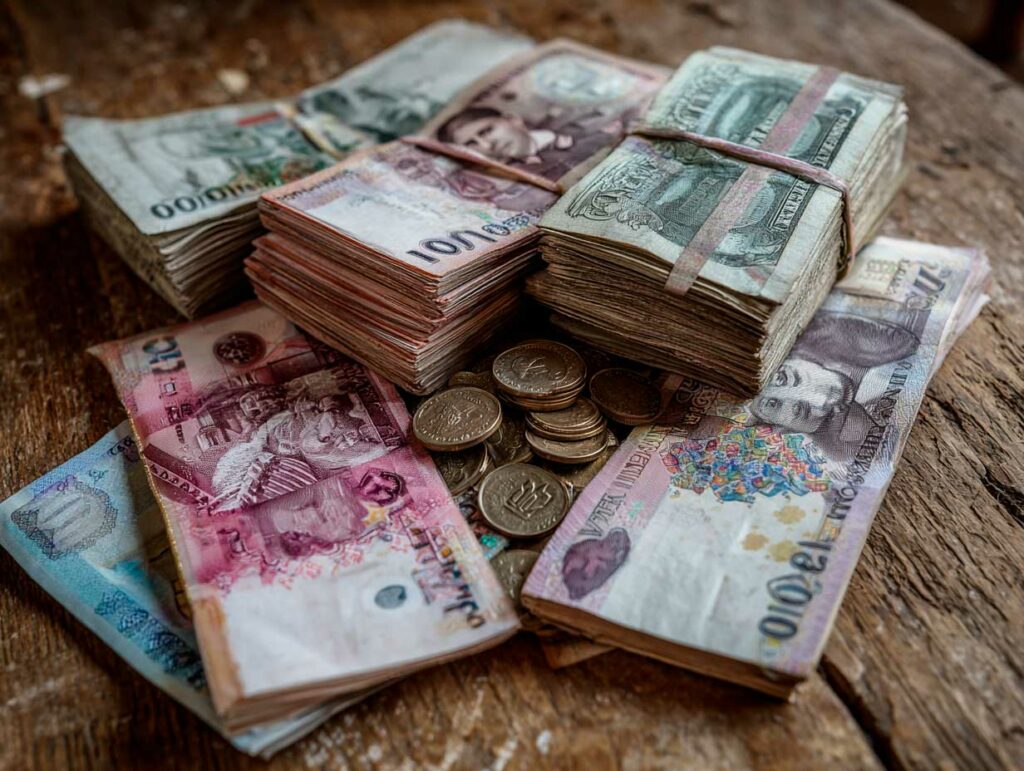
Detailed analysis of the financing of the war in Ukraine: sources, amounts, financial mechanisms, role of allies, impact on the Ukrainian economy
Overall financing of the war in Ukraine
The financing of the war in Ukraine is based on a military budget of 2.6 trillion hryvnia (≈ 63 billion dollars in 2025). This sum covers expenditure on armaments, logistics, and defense, but remains a fraction of the total cost of the war, estimated at €700 billion, including reconstruction, humanitarian aid, and economic losses. The situation has created a considerable budgetary effort for Ukraine in wartime, permanently mobilizing resources well beyond the means of a country in conflict.
The role of Western allies in financing
International financial support for Ukraine is massive. The European Union, through its institutions and member states, has committed $167 billion (2022–2025), compared to $115 billion for the United States over the same period. These funds combine humanitarian, economic, and military aid, sometimes in the form of loans or guarantees, sometimes as grants.
The EU has structured its support through several instruments: macro-financial assistance of €34.2 billion, the Facility for Ukraine (€31.3 billion already mobilized, up to €50 billion planned), and the use of frozen Russian assets, the proceeds of which finance the European Peace Facility (EPF).
The United States has mobilized nearly $175 billion through five funding bills, $130 billion of which has directly benefited the Ukrainian government. This includes $20 billion in loans financed by revenues from frozen Russian assets.
According to another estimate, actual US support to the Ukrainian state amounts to $50.9 billion, of which $18.3 billion is allocated to defense, with the remainder in budget support via the World Bank or loan guarantees.
Detailed financial mechanisms
European Union aid
- Macro-financial assistance: loans and grants to stabilize the economy, amounting to €34.2 billion.
- Facility for Ukraine: specific instrument of up to €50 billion for reconstruction, modernization, and reforms. $31.3 billion already disbursed.
- EPP (European Peace Facility): off-budget instrument dedicated to arms and military assistance, funded by revenues from frozen Russian assets. Initial amount of several billion, subsequently increased to around €5.6 billion, with a proposal to extend it to €20 billion.
The effectiveness of emergency loans
The G7 has committed $6.3 billion through the Emergency Rapid Assistance (ERA) mechanism until June 2025. This mechanism allows for rapid loans on favorable terms for Ukraine.
US support
The US Congress has authorized $174 billion, including $163 billion for Ukraine and the rest for humanitarian aid. In addition, $20 billion in loans will be drawn from interest on frozen Russian assets.
An independent analysis specifies that over three years, approximately $50.9 billion has actually been delivered to the Ukrainian government, divided between defense and budget support.
Alternative and innovative financing schemes
European debates are currently exploring the creation of “Coalition of the Willing bonds” to enable collective financing, mobilize private investors, and ease the budgetary pressure on states.
Another measure is to accelerate loans from the Ukraine Facility and make greater use of revenues from frozen Russian assets to fill deficits, particularly military and budgetary ones.

Future needs and existing tensions
For 2026, Ukraine needs to finance a requirement of $65 billion, of which only one-third is already secured. The estimated deficit could reach $58 billion, putting pressure on the sustainability of the Ukrainian economy in wartime.
The International Monetary Fund is planning a $15.5 billion aid program over four years, included in a broader $153 billion plan, or about $40 billion per year. However, some analysts estimate that the needs are much higher, in the region of $150 billion per year, if Ukraine is to be guaranteed victory.
Asset accounting and the burden on the Ukrainian economy
Ukraine’s military budget, amounting to approximately $63 billion in 2025, represents 31% of GDP, a historic high.
By comparison, European citizens have borne an average cost of $95 per year through their taxes, and Americans approximately $109 per capita to support the Ukrainian war effort. For Ukraine, the per capita cost will reach $3,424 over the period 2022–2024.
Comparative perspectives: Russian financing
Russia, for its part, is facing enormous pressure on its finances: a budget deficit of 4.9 trillion rubles (~61 billion dollars), tax increases, and cuts in civilian spending. Its National Wealth Fund has been seriously depleted: from more than 500 tons of gold in 2023, only 164 tons remain, representing less than 3% of GDP. Russia’s war effort is weighing heavily on its public finances.
Outlook and challenges
The financing of arms for Ukraine is currently based on a complex combination of loans, grants, the freezing of Russian assets, and EU instruments. Given the enormous needs (defense, reconstruction, social support), the continued military aid from the US and the EU remains vital.
Greater financial creativity seems essential: joint bonds, project currencies, and public-private partnerships. The sustainability of the effort will also depend on the progress of reforms in Ukraine, on which access to certain external financing depends (e.g., via the IMF).
The challenge remains twofold: supporting the war in Ukraine and Ukraine’s external financing today, while preparing for Ukraine’s economic reconstruction. This model could also influence how Europe finances its collective defense in the long term.
Summary table of financing for the war in Ukraine
| Source | Estimated amount | Comments |
|---|---|---|
| Ukraine’s military budget | $63 billion (2025) | Represents approximately 31% of Ukraine’s GDP |
| European Union (2022-2025) | €167 billion | Includes macro-financial assistance and Facility for Ukraine |
| United States (2022-2025) | $115-175 billion | Five funding bills, split between defense and budget support |
| International Monetary Fund (IMF) | $15.5 billion (over four years) | Part of a broader plan worth $153 billion |
| G7 coalition (ERA loans) | €6.3 billion | Short-term emergency loans |
| Frozen Russian assets (interest) | $20 billion (guaranteed loans) | Income from frozen Russian assets used to finance aid |
| Russian budget deficit (2025) | 4.9 trillion rubles (≈$61 billion) | Deficit caused by massive military spending and tax increases |
| Russian National Wealth Fund (2025) | 164 tons of gold (<3% of GDP) | Reserves depleted, increased pressure on public finances |
War Wings Daily is an independant magazine.